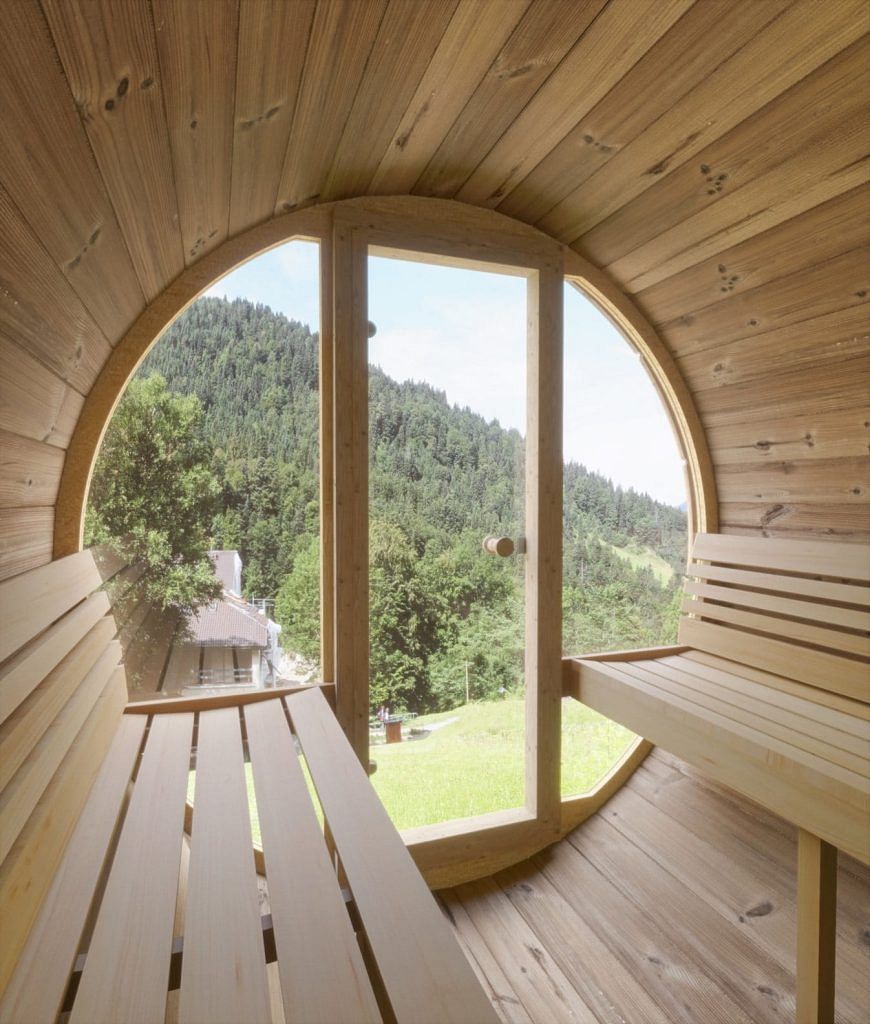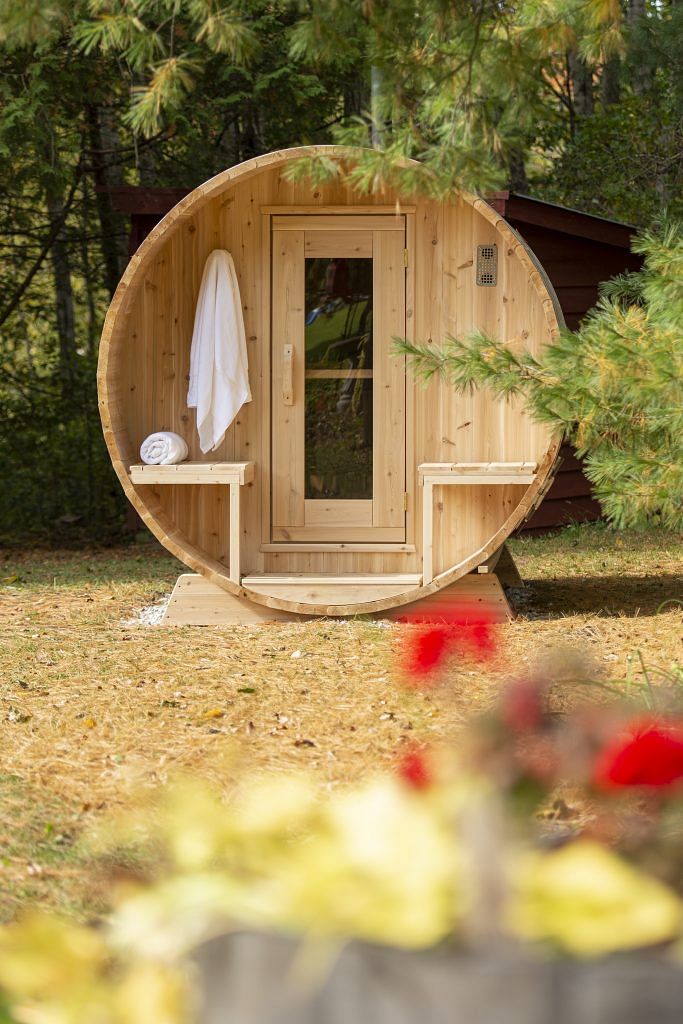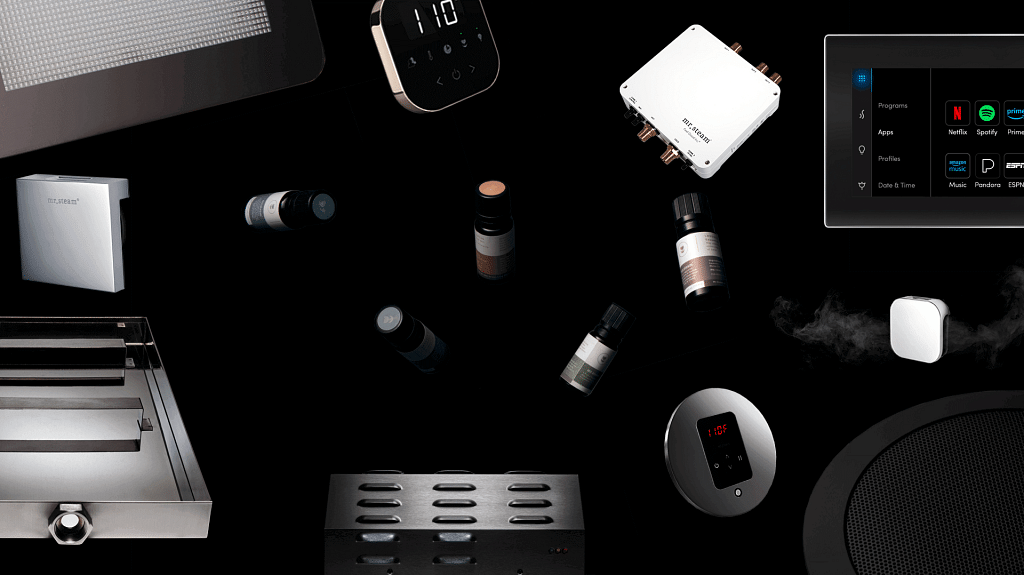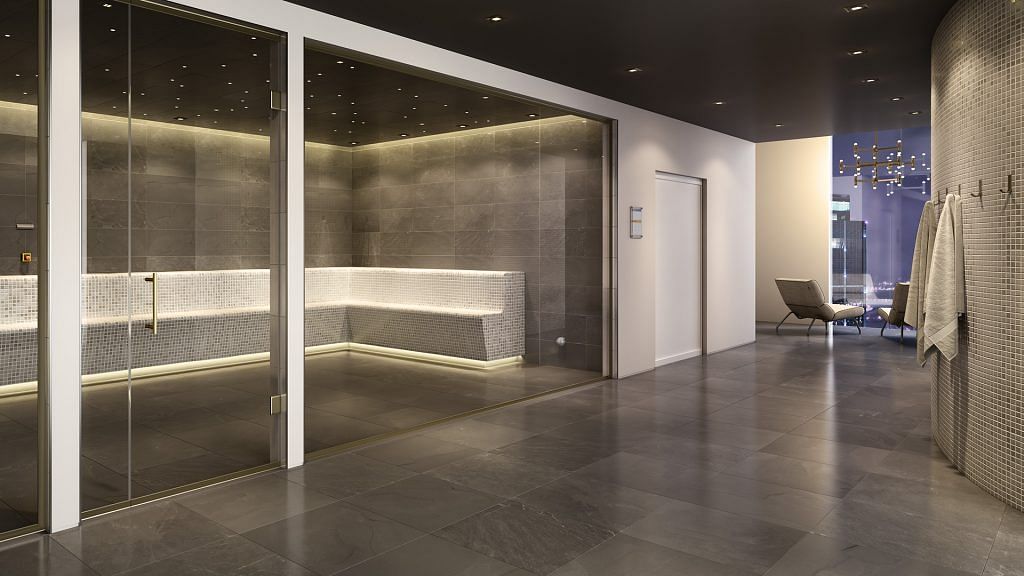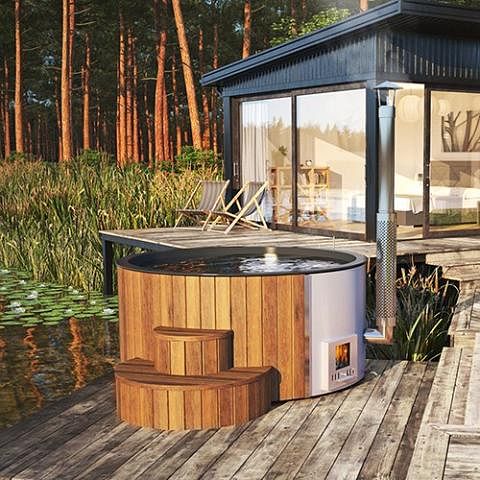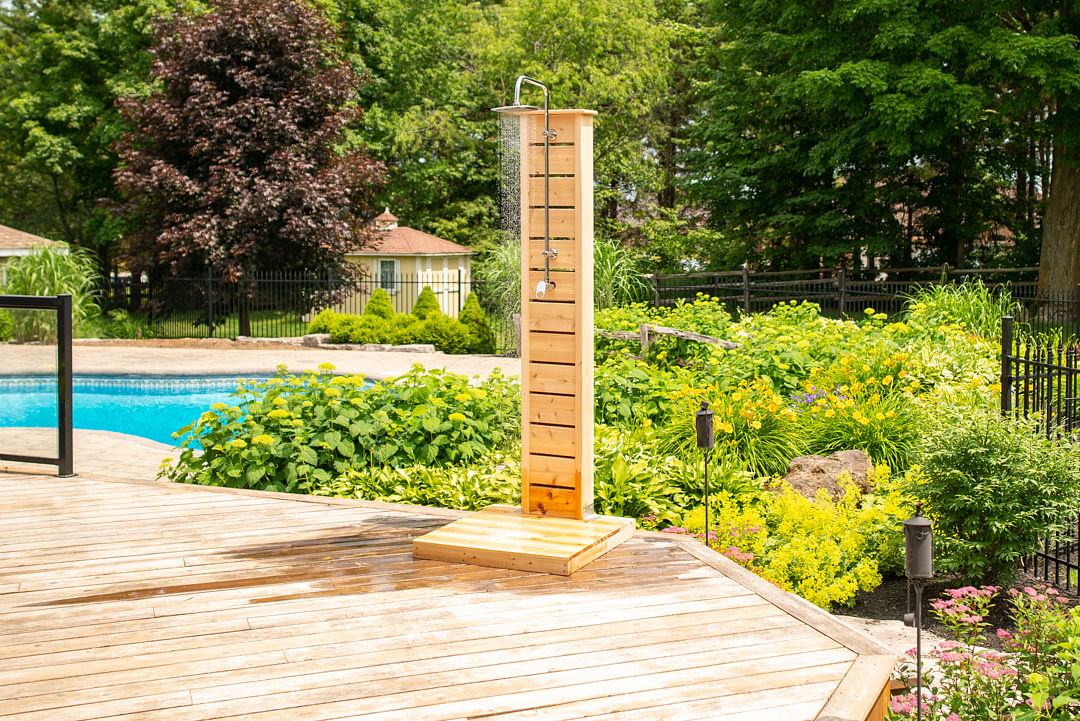Our Sauna Blog, Sauna
Types of Sauna Heaters: A Complete Guide for 2024
Looking for a sauna heater and not sure which one to choose? See our complete guide comparing all the types of sauna heaters to help you decide more easily.
Selecting the right sauna heater is crucial for creating your perfect at-home sauna experience. This guide will explore the four main types of sauna heaters available: electric, wood-burning, gas, and infrared. We’ll go into each option’s heat-up time, running cost, ease of use, maintenance requirements, and the unique ambiance it creates. By understanding these factors, you can make an informed decision about the best heater to suit your needs and preferences. So, whether you prioritize speed and convenience, relish the traditional charm of a wood fire, or value targeted heat therapy, this guide will equip you with the knowledge to find your ideal sauna heating solution.
Electric Sauna Heater
Heat Up Time
Electric sauna heaters are known for their fast heat-up times. They can typically bring your sauna room to temperature within 30-60 minutes, depending on size of the heater and the sauna itself. This makes them ideal for those who want to enjoy a quick and convenient sauna experience.
Cost of Running (USA)
The cost of running an electric sauna heater in the USA will depend on your electricity rates and how often you use it. However, to give you an idea, let’s consider an average national electricity cost of $0.14 per kilowatt-hour (kWh) [US Energy Information Administration, 2023]. If you use your sauna for three 45-minute sessions per week with a 6 kW heater, here’s a rough estimate:
- A typical 45-minute session would use around 4.5 kWh (6 kW heater x 0.75 hours).
- Three sessions per week would use 13.5 kWh (4.5 kWh/session x 3 sessions).
- The weekly cost would be around $1.89 (13.5 kWh x $0.14/kWh).
This is a basic example, and the actual cost will vary depending on your specific usage, heater wattage, and electricity rates.
Main Reason to Choose
There are several reasons to choose an electric heater for your sauna. First, as mentioned, they are easy to use and heat up quickly. Additionally, electric heaters offer precise temperature control, allowing you to customize your sauna experience. They are also generally lower maintenance than wood-burning heaters.
Main Reason to Avoid
One drawback of electric heaters is the initial cost. They tend to be more expensive than wood-burning heaters. Additionally, electric heaters may not provide the same “authentic” sauna experience for some users, who prefer the ambiance of a wood fire.
Click here to see our electric heaters
Wood Burning Sauna Heater
Heat Up Time
Wood-burning sauna heaters take longer to heat up than electric heaters. You can expect to wait anywhere from 45 minutes to an hour or more, depending on the size of the sauna, the wood type, and how well the fire is managed.
Cost of Running (USA)
Wood-burning sauna heaters are generally considered very cost-effective to operate in the USA, especially if you have access to a readily available firewood source. The cost will depend on firewood prices in your area. Firewood can vary significantly depending on location and wood type, but for estimation purposes, let’s consider an average cost of $50 per cord [US Energy Information Administration, 2023]. One cord of firewood can provide many sauna sessions, so the cost per use can be quite low.
Main Reason to Choose
There are several reasons to choose a wood-burning sauna heater. First, they are known for creating a more traditional and natural sauna experience, with the addition of the wood fire crackling and the radiant heat it produces. Second, as mentioned, they can be very cost-effective to operate, especially with a ready supply of firewood.
Main Reason to Avoid
Wood-burning heaters require more effort to use than electric heaters. You’ll need to acquire and store firewood, prepare the fire, and manage it during the sauna session. Additionally, wood-burning heaters require more maintenance, such as cleaning out ashes and ensuring proper chimney function. Finally, some areas may have restrictions on wood burning due to air quality concerns.
Click here to see our wood burning heaters
Gas Heater
Heat Up Time
Gas sauna heaters offer a good balance between electric and wood-burning heaters in terms of heat-up time. They typically heat your sauna room within 30-45 minutes, depending on the size of the heater and the sauna itself. This makes them a good option for those who want a faster heating time than wood-burning heaters but still appreciate the convenience of gas over electric.
Cost of Running (USA)
The cost of running a gas sauna heater in the USA depends on your natural gas rates and how often you use it. However, natural gas is generally cheaper than electricity. To give a rough estimate, let’s consider an average national gas price of $6.86 per Mcf (thousand cubic feet) [US Energy Information Administration, 2023]. A typical gas sauna heater might use around 1 cubic foot of gas per minute. Here’s a basic example:
- A 45-minute session would use 45 cubic feet of gas (1 cubic foot/minute x 45 minutes).
- Three sessions per week would use 135 cubic feet (45 cubic feet/session x 3 sessions).
- The weekly cost could be around $9.40 (135 cubic feet x $6.86/Mcf assuming an efficient heater that converts most gas into heat).
This is a basic example, and the actual cost will vary depending on your specific usage, heater efficiency, and gas rates.
Main Reason to Choose
Gas sauna heaters offer several advantages. They provide a faster heat-up time than wood-burning heaters while still offering a powerful and consistent heat source. They are also generally easier to use and require less maintenance than wood-burning heaters. Additionally, gas can be a more cost-effective option than electricity in many areas.
Main Reason to Avoid
Gas sauna heaters do require a natural gas hookup, which may not be available in all locations. Additionally, some users may be concerned about the safety aspects of having a gas appliance in their home. It’s important to ensure proper installation and ventilation for a gas sauna heater. Finally, gas heaters may not offer the same “traditional” sauna experience as wood-burning heaters for some users.
Infrared Saunas
Unlike the previous heater types, infrared saunas don’t directly heat the air. Instead, they utilize infrared lamps that emit radiant heat directly warming your body.
Heat Up Time
Infrared saunas generally have the fastest heat-up times among all sauna heater options. They can reach comfortable temperatures within 15-30 minutes, making them ideal for those who want a quick and efficient sauna experience.
Cost of Running (USA)
The cost of running an infrared sauna in the USA depends on your electricity rates and usage. Infrared saunas typically use less power than traditional electric heaters due to their targeted heating approach. Let’s consider an average national electricity cost of $0.14 per kilowatt-hour (kWh) [US Energy Information Administration, 2023]. Here’s a basic example:
- A typical infrared sauna might use around 1.5 kW per hour.
- Three 30-minute sessions per week would use 13.5 kWh (1.5 kW x 0.5 hours/session x 3 sessions).
- The weekly cost could be around $1.89 (13.5 kWh x $0.14/kWh).
This is a basic example, and the actual cost will vary depending on your specific usage, sauna size, and electricity rates.
Main Reason to Choose
Infrared saunas offer several advantages. Their fast heat-up times and targeted heat therapy provide a convenient and efficient way to enjoy the benefits of sauna use. Additionally, they are generally considered more energy-efficient than traditional electric heaters.
Main Reason to Avoid
While infrared saunas offer a unique experience, it may not be for everyone. Unlike traditional saunas that heat the air, infrared saunas primarily heat your body directly. This can feel different to some users who prefer the enveloping warmth of a traditional sauna. Additionally, infrared saunas may not be suitable for those with certain health conditions. It’s always best to consult with a doctor before using any sauna.
Click here to see our infrared saunas
Differences Between the Types of Heaters
Here’s a table summarizing the key differences between the various sauna heater types we discussed:
|
Feature |
Electric |
Wood-Burning |
Gas |
Infrared |
|
Heat Up Time |
Fastest (30-60 minutes) |
Slowest (45 minutes – 1+ hour) |
Moderate (30-45 minutes) |
Fastest (15-30 minutes) |
|
Cost to Run (USA) |
Moderate (depends on electricity rates) |
Very Cost-Effective (with firewood access) |
Potentially Cost-Effective (depends on gas rates) |
Potentially Cost-Effective (depends on electricity rates) |
|
Ease of Use |
Easiest (flip a switch) |
Most Effort (fire prep & maintenance) |
Easier than Wood-Burning (but requires gas hookup) |
Easy (similar to electric) |
|
Maintenance |
Low |
High (ash cleaning, chimney care) |
Moderate (less than wood-burning) |
Low |
|
Ambiance |
Modern Convenience |
Traditional, Crackling Fire |
Convenient, Powerful Heat |
Unique Targeted Therapy |
|
Considerations |
Initial Cost |
Firewood Storage, Local Restrictions |
Gas Hookup, Safety |
Not Traditional Sauna Experience, Health Conditions |

